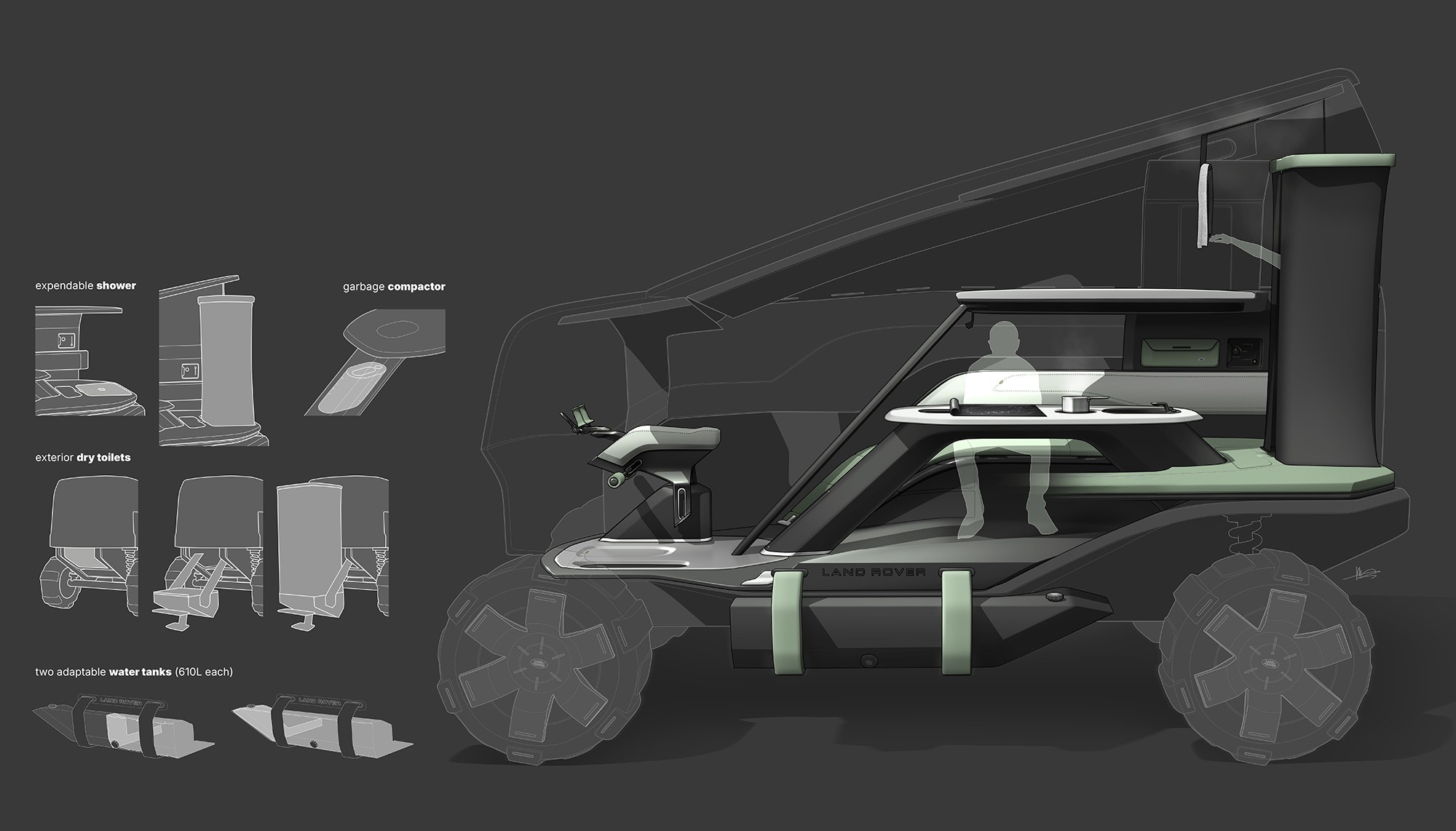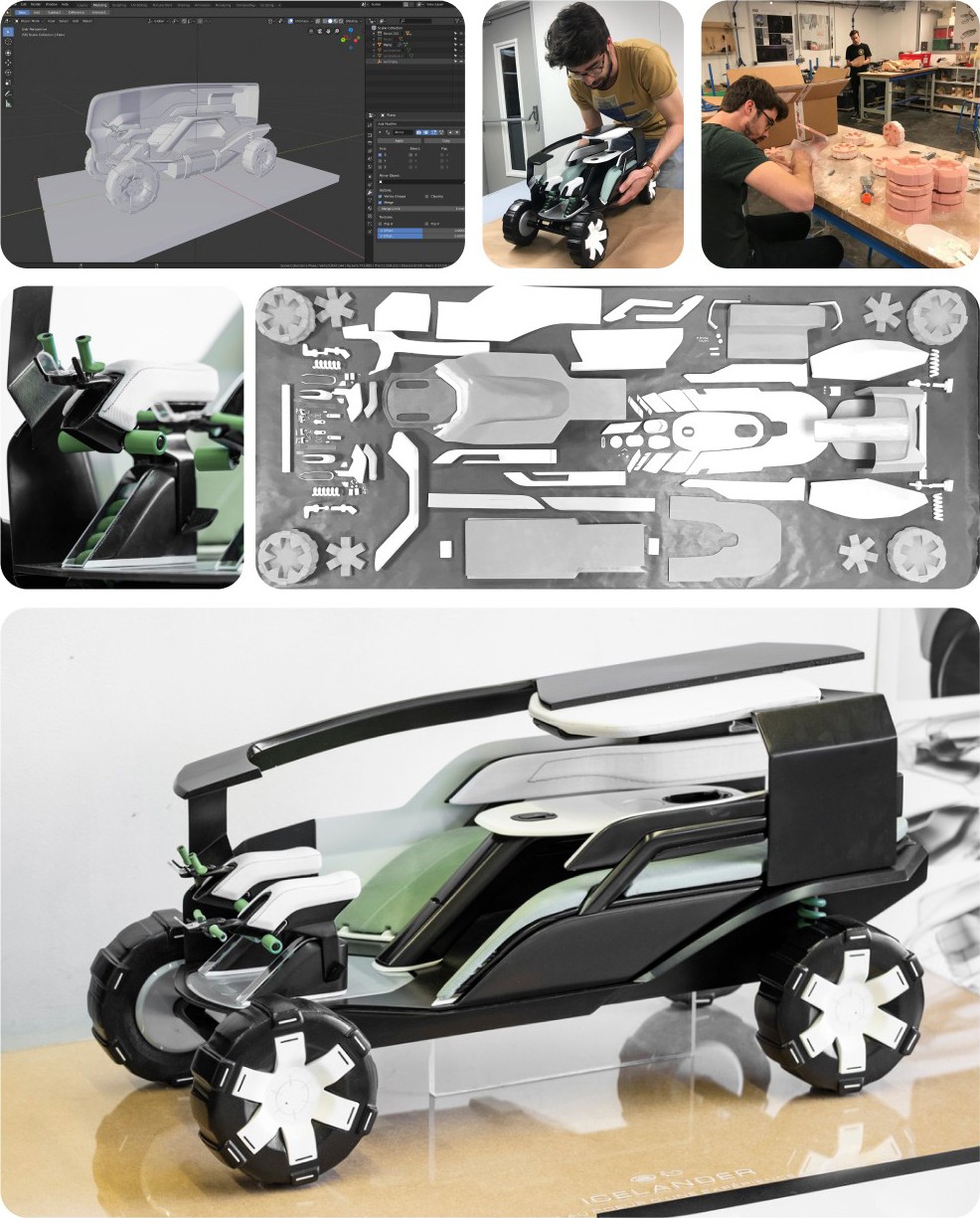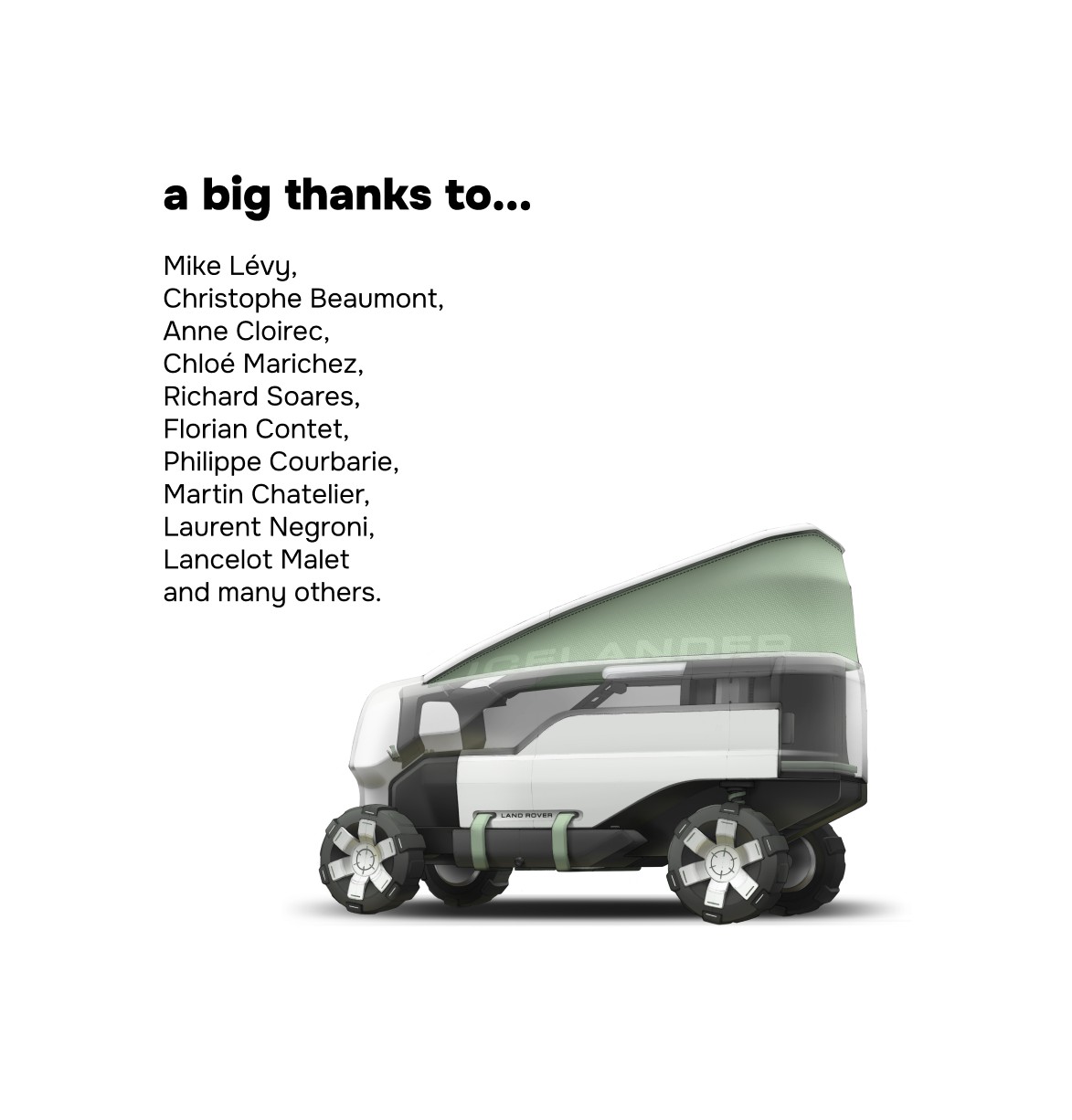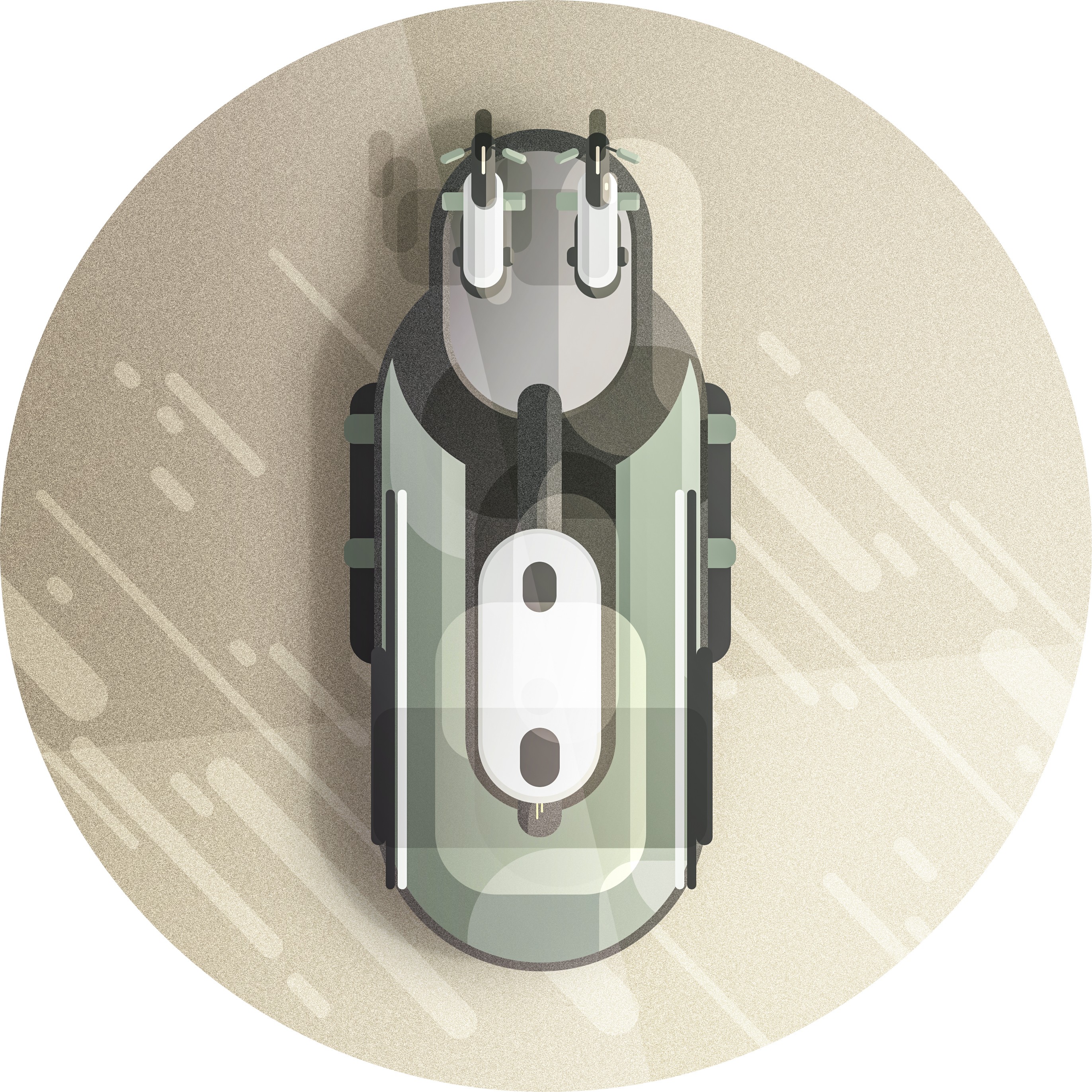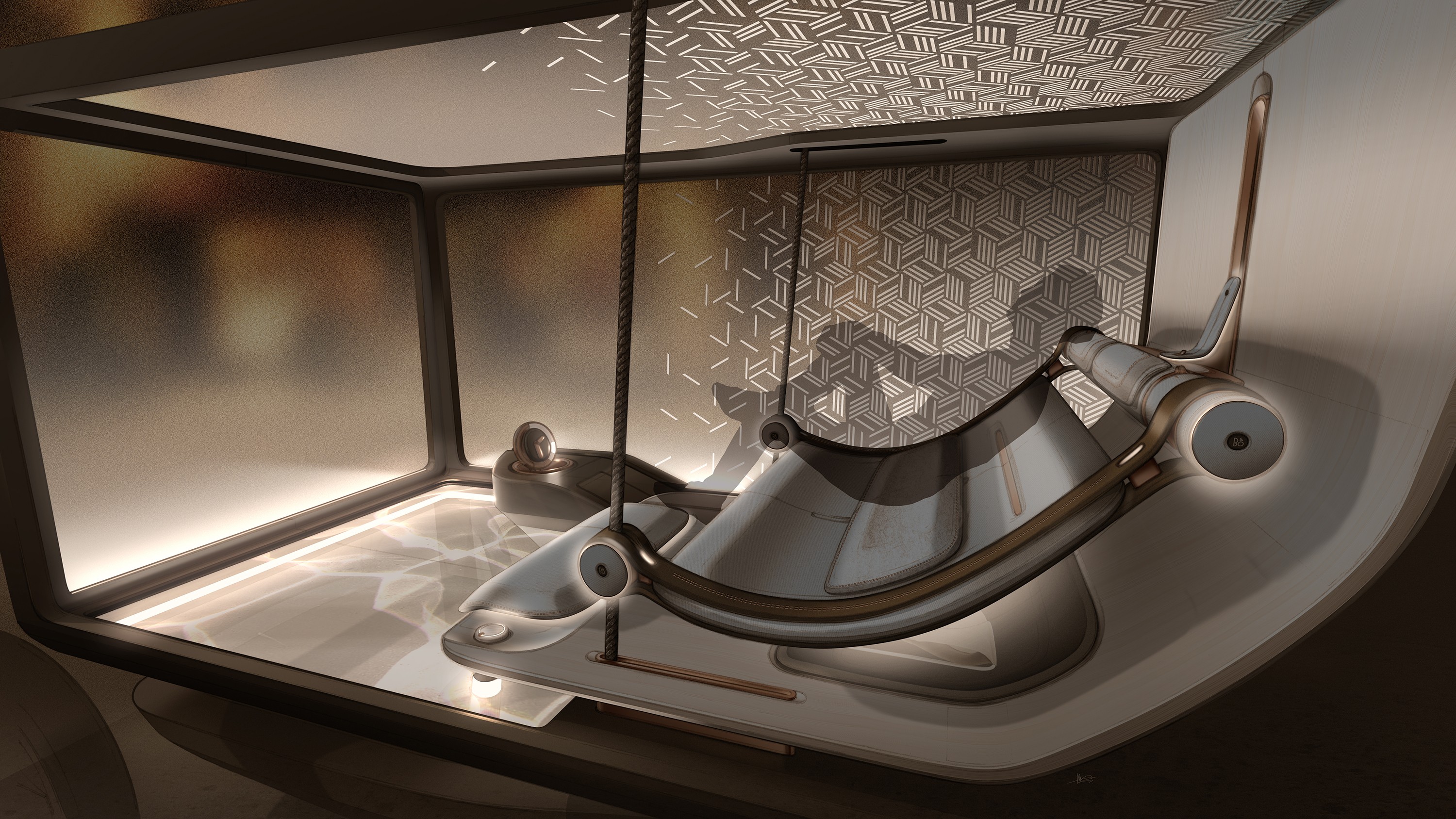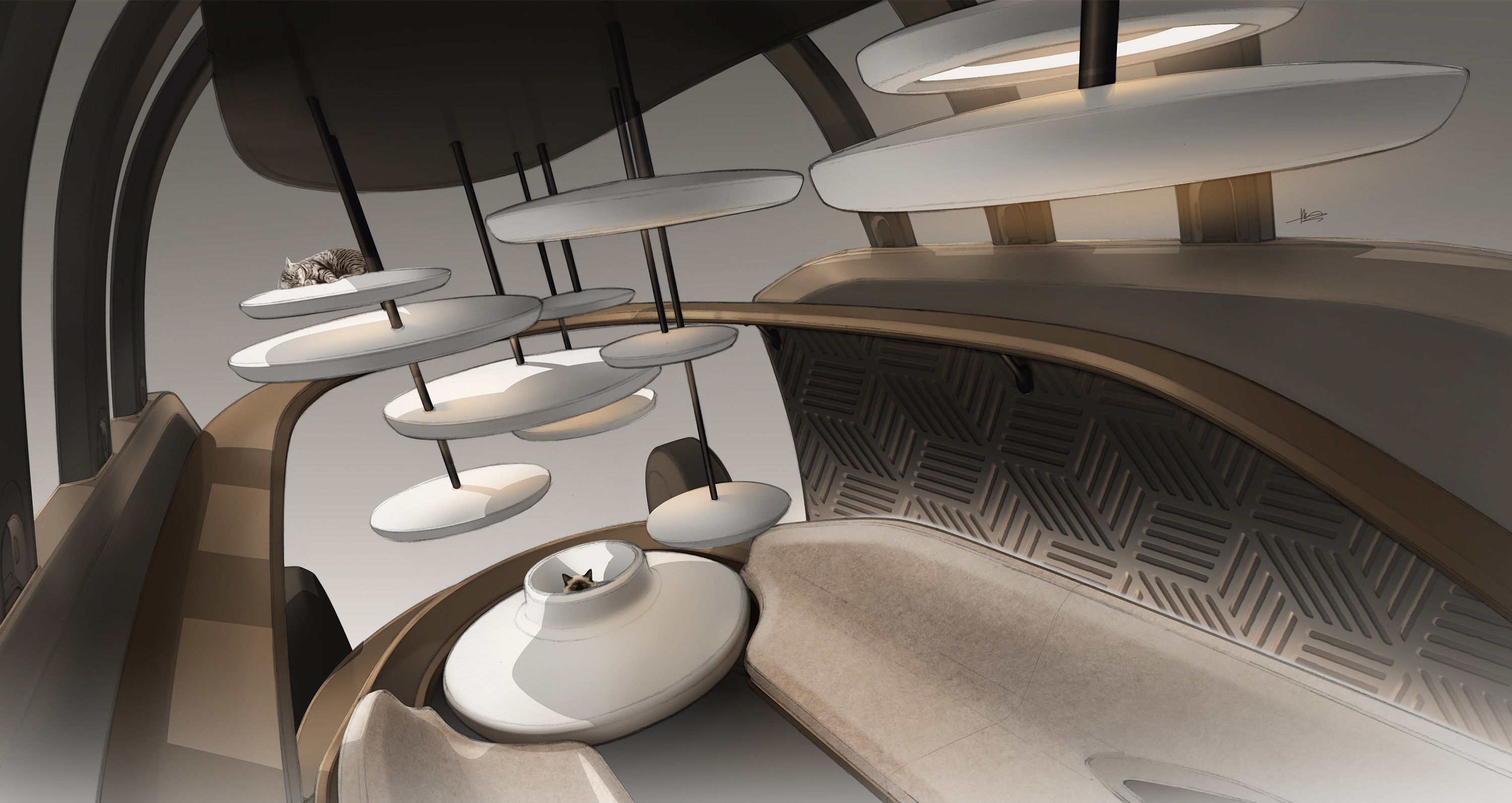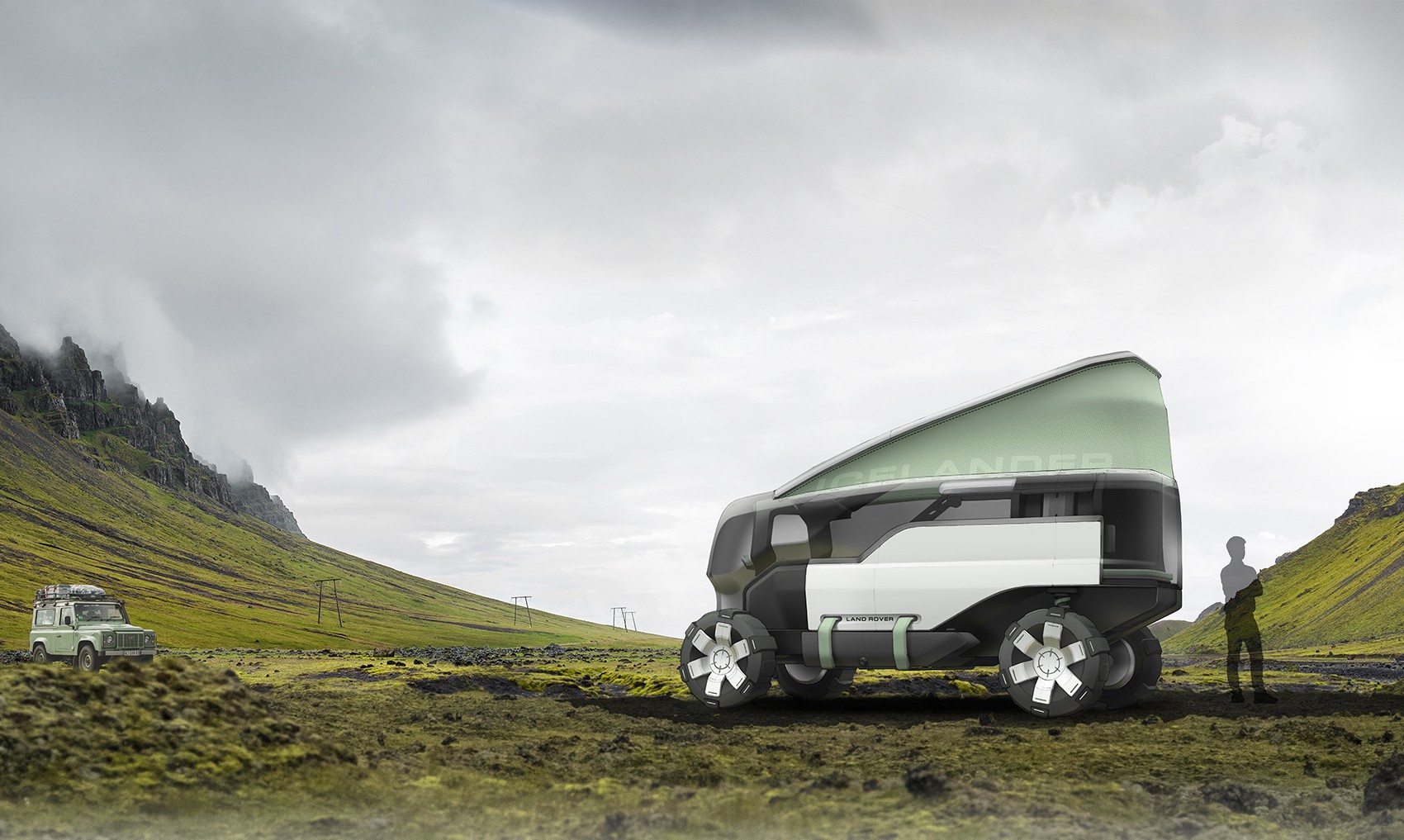
land rover icelander
- disorientation in Iceland
school project - graduation project
duration: 6 months
delivery: 2019
brief: “do your best.”
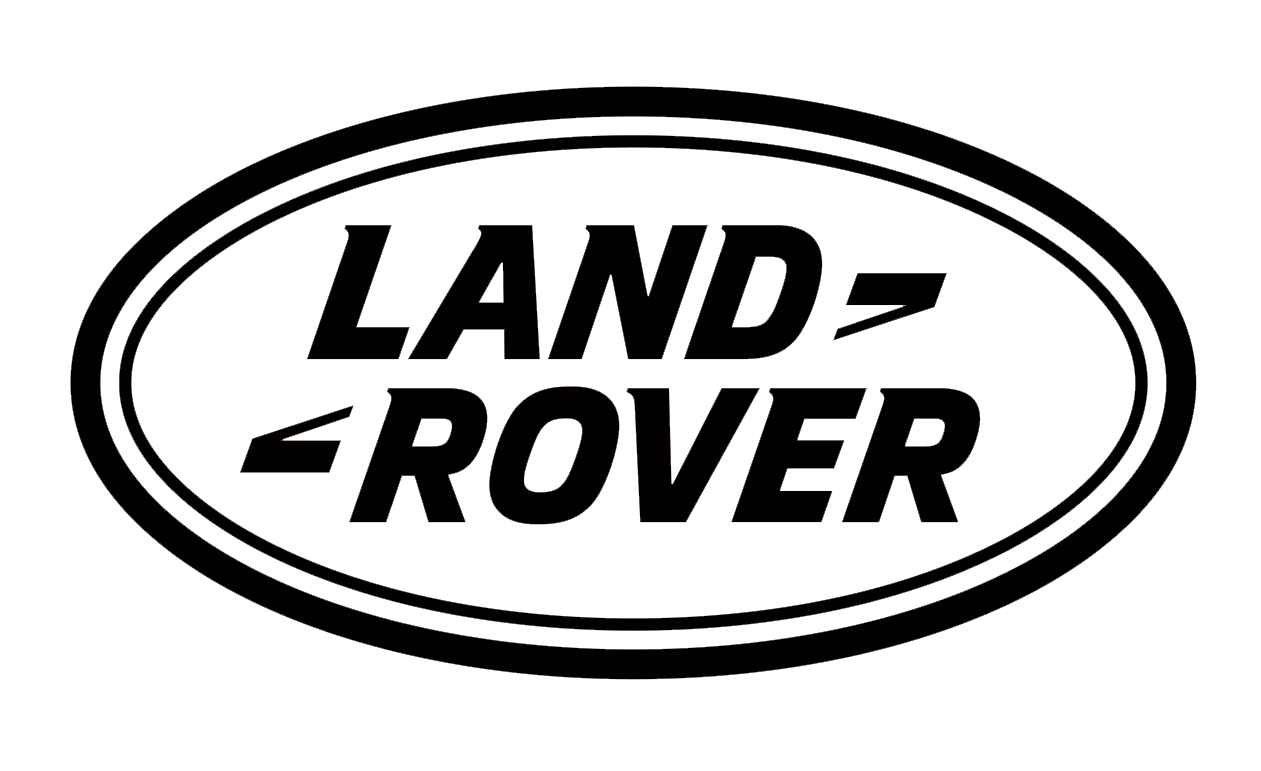
learnings
By 2050, fully autonomous transport and hyper-connected devices have made manual driving feel obsolete.
Urban sprawl swallows what remains of the countryside, so city dwellers increasingly seek vacations that offer real independence and a taste of rural life.
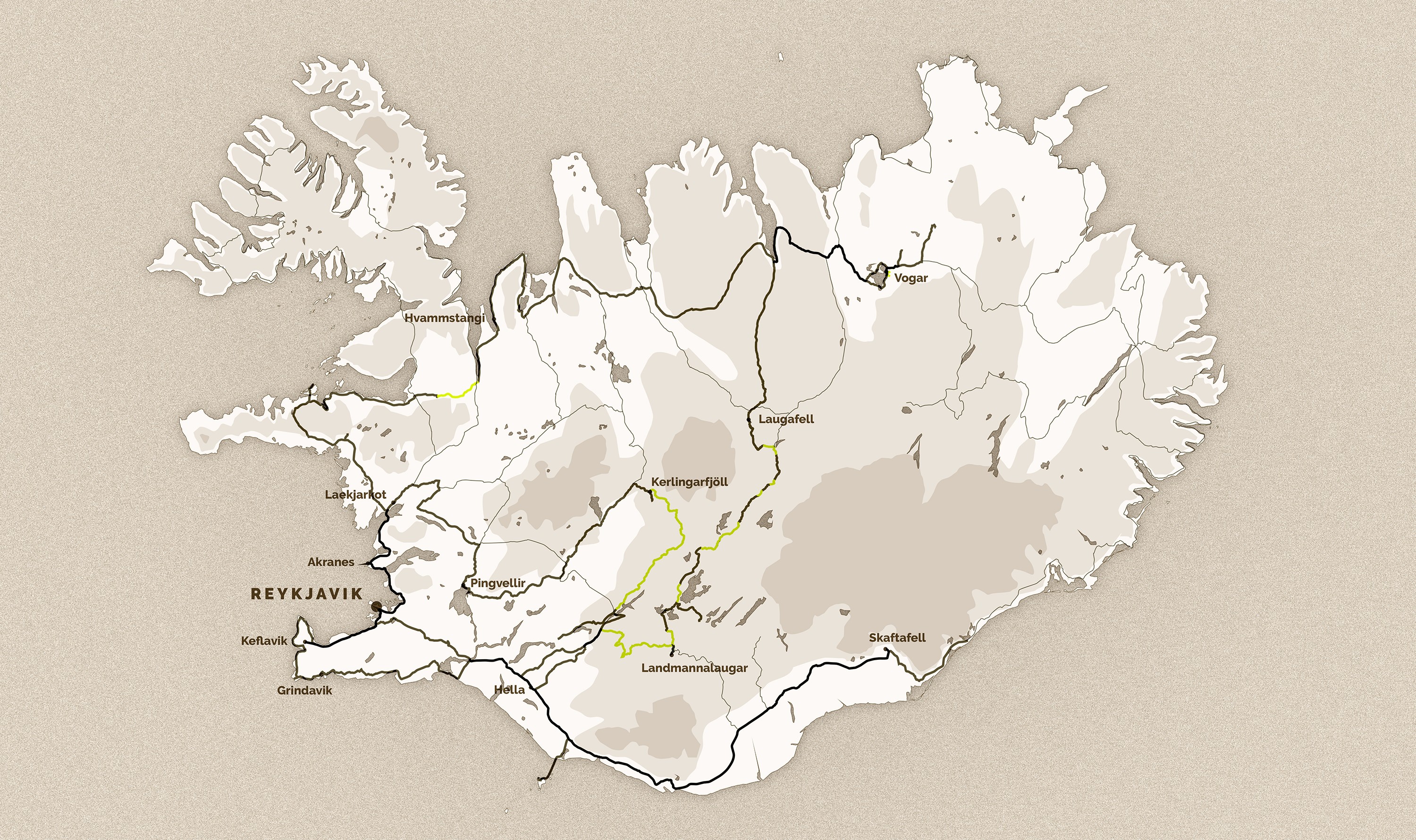
Over the course of two weeks, users will rely entirely on themselves, offering a valuable chance to disconnect from their everyday routines.
Thanks to this vehicle and by learning to drive, users will regain independence and autonomy through disorientation. They will enjoy driving emotions for the first time!
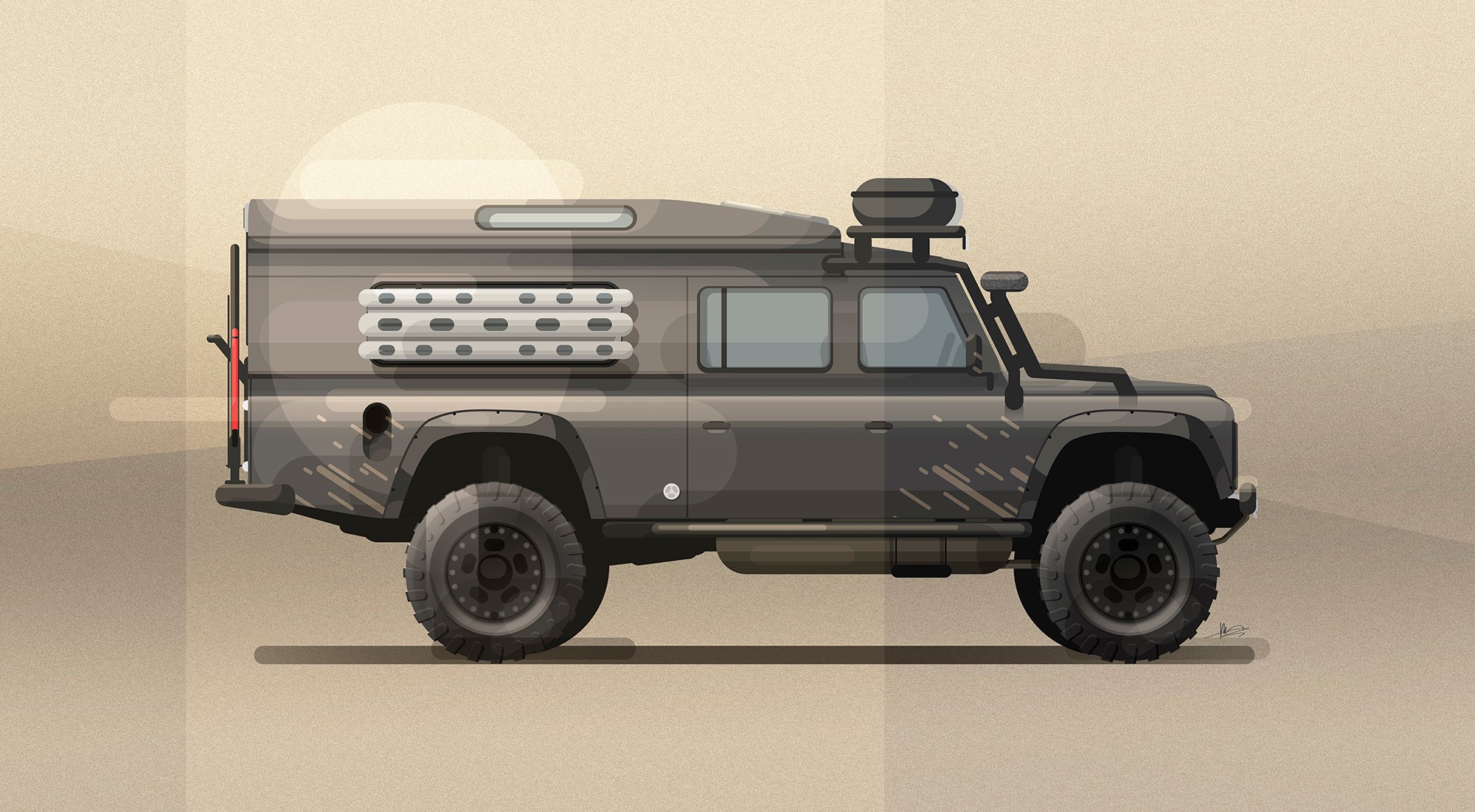
field study
In the summer of 2018, I spent over two weeks exploring Iceland by car, traveling through mountains, plains, snow, rivers, and various types of roads.
Driving let me truly feel the harsh beauty of the environment. Though at times, it was more challenging than enjoyable. This made the idea of an autonomous vehicle especially appealing.
Here are some situations you might encounter in Iceland.
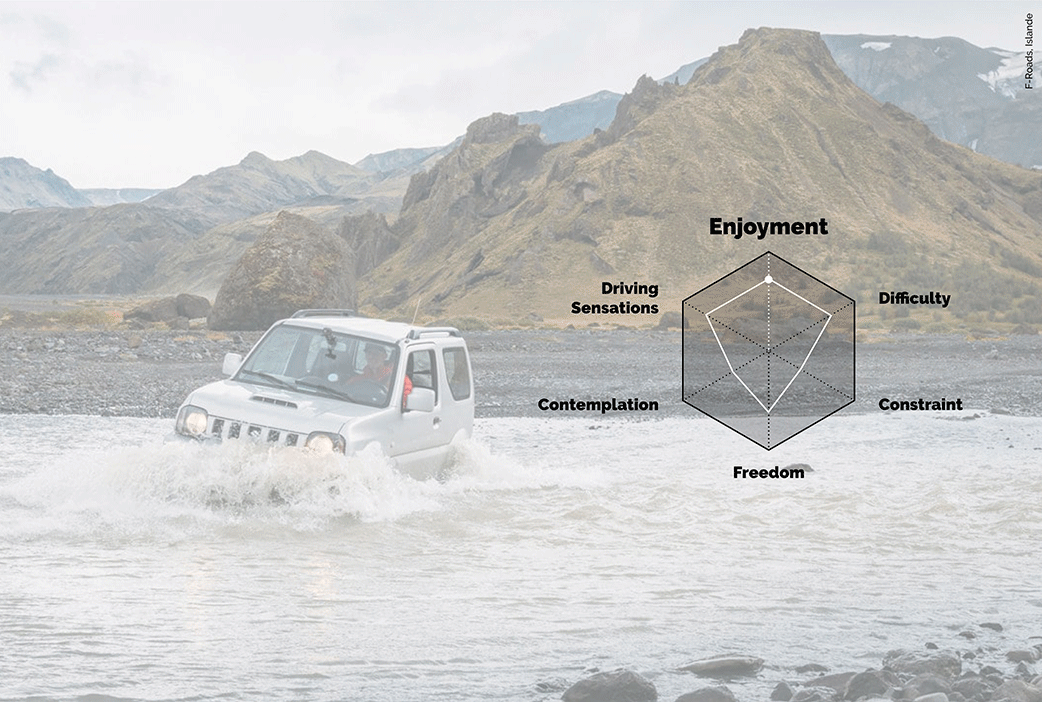
concept phases
The design evolved through successive experiments aimed at balancing freedom, realism, and user-friendliness.
It began as a split semi autonomous vehicle, turned into a single chassis, then into a more distinctive form framed by oversized front wheels that double as protective “portals” for panoramic views and safe disorientation.
Each iteration pared away complexity while sharpening the core goal: giving travelers an authentic sense of autonomy and adventure in a realistic, inviting and trustworthy vehicle.
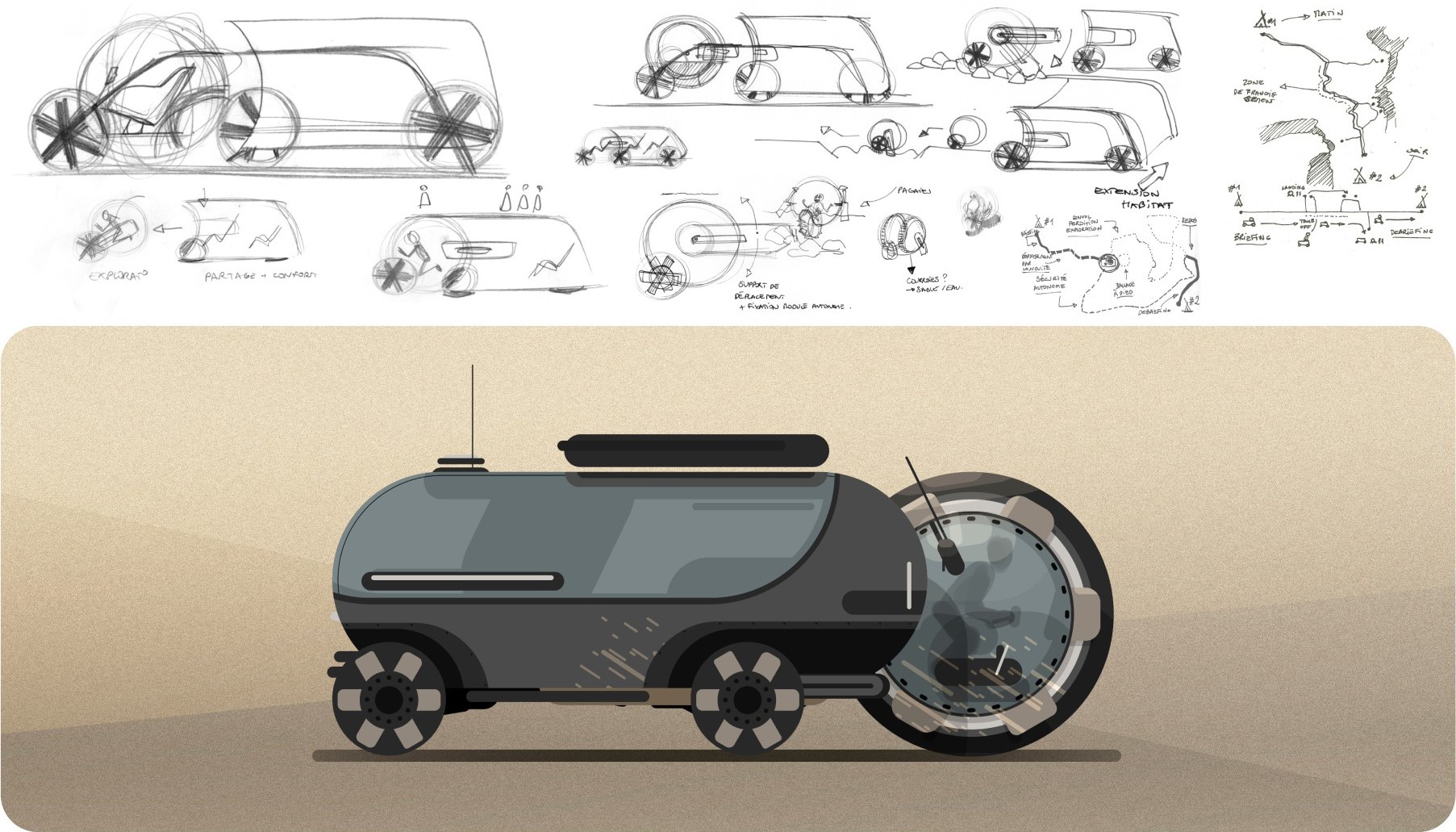
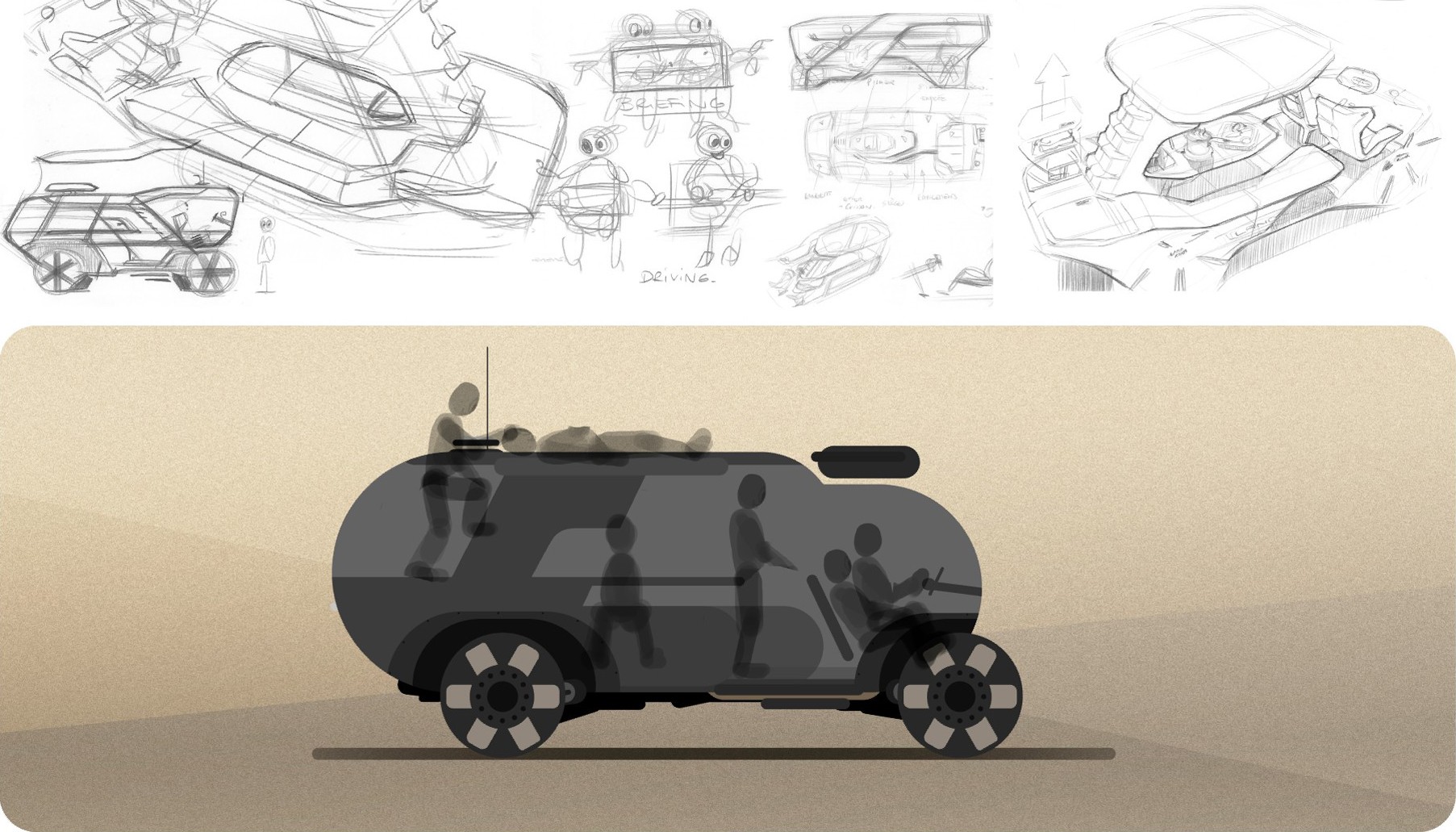
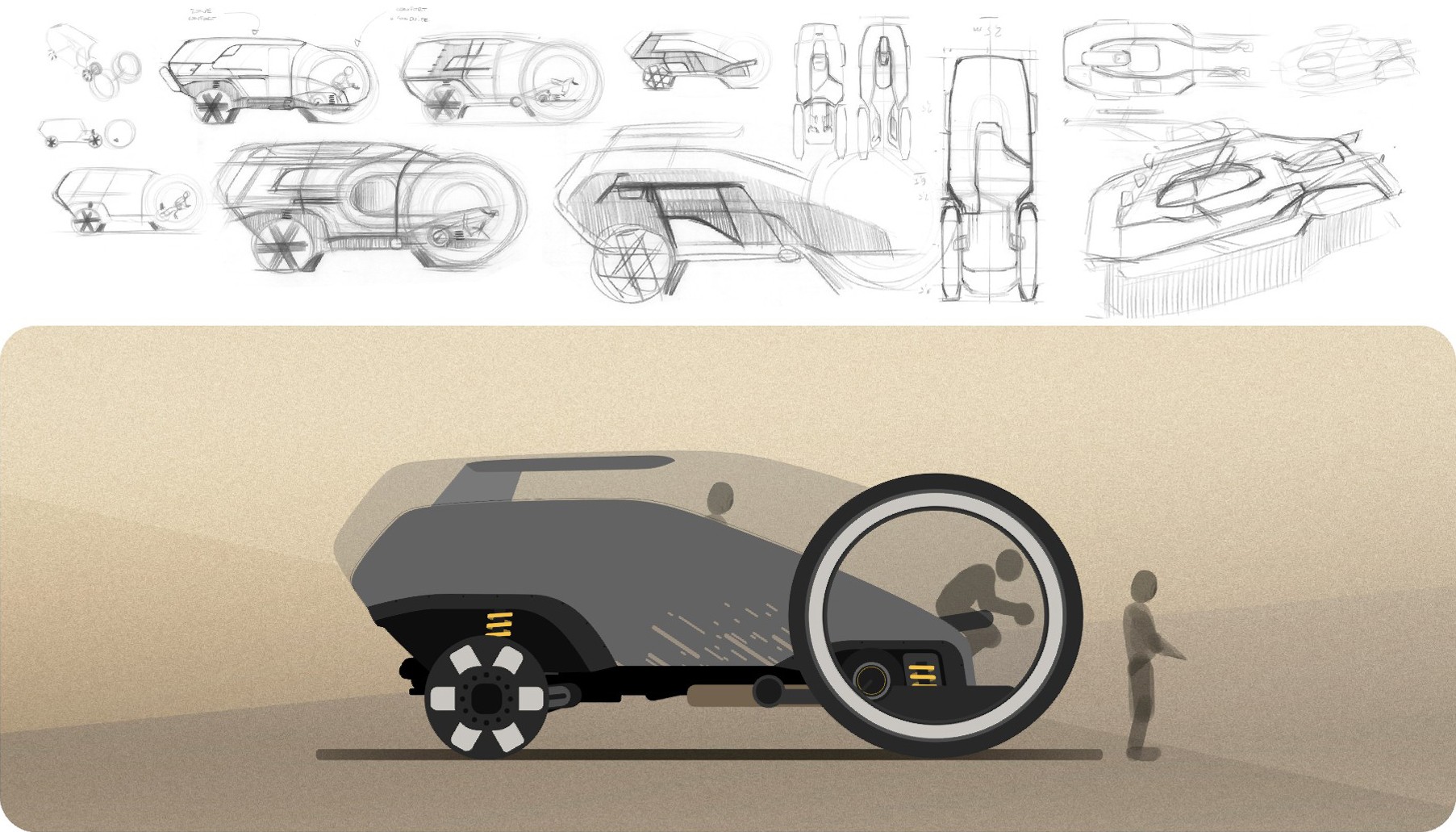
final concept
The interior design shifted toward a more intuitive and inclusive experience, especially for users with no driving background. Inspired by bicycles, the vehicle features two saddles with handlebars, allowing easy control and shared driving roles between a pilot and co-pilot.
The focus then moved to refining interior architecture and integrating essential camping elements like a retractable roof and modular features for daily living.
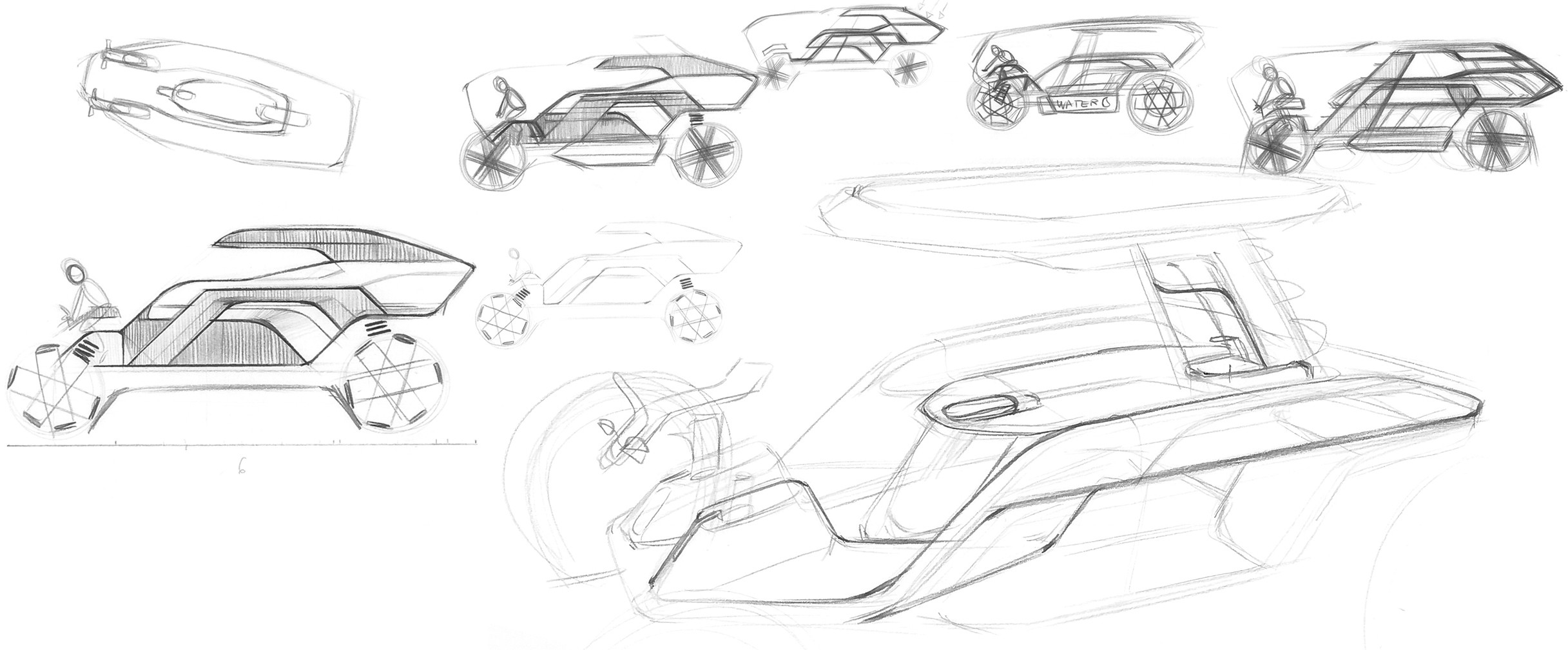
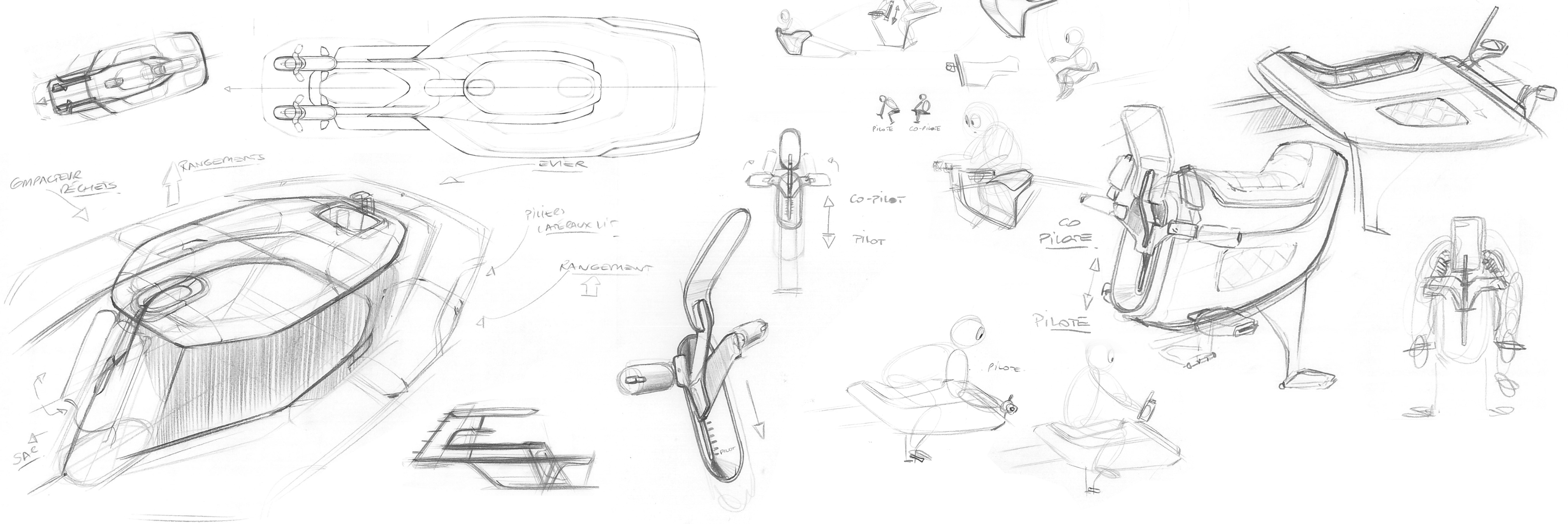
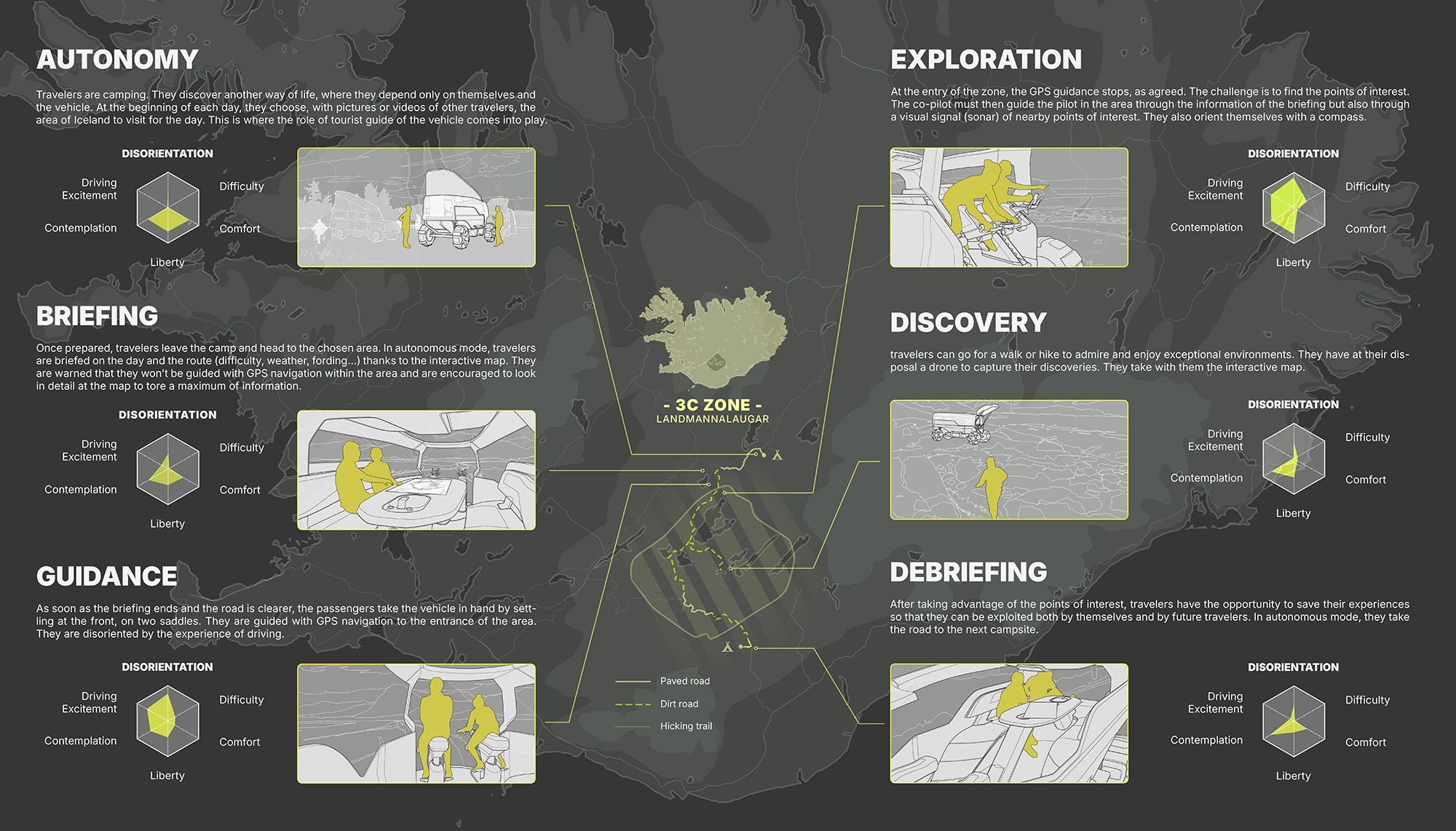
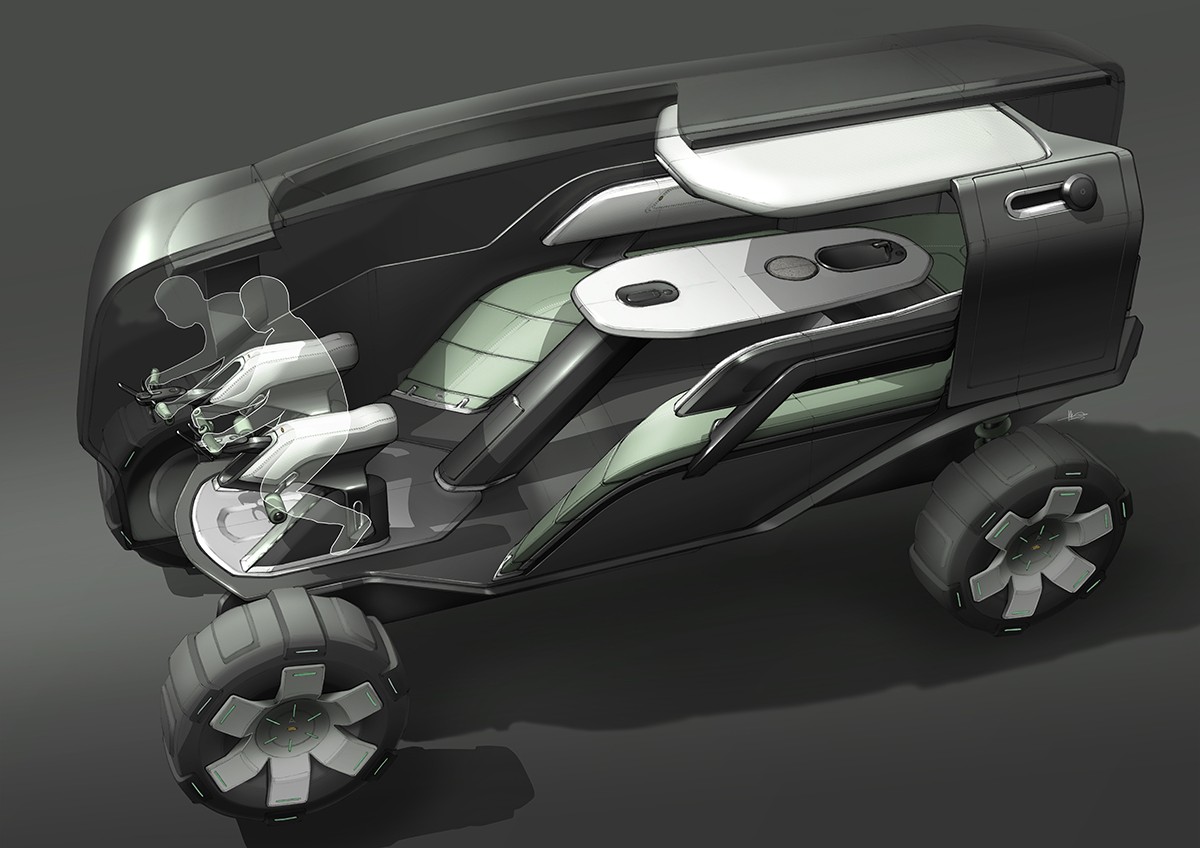
disorientation through driving
Since the travelers have never driven, the experience must be intuitive, hence the inspiration from motorcycles and bicycles. Two saddles allow for different positions based on role or preference, letting passengers easily switch between driver and co-driver.
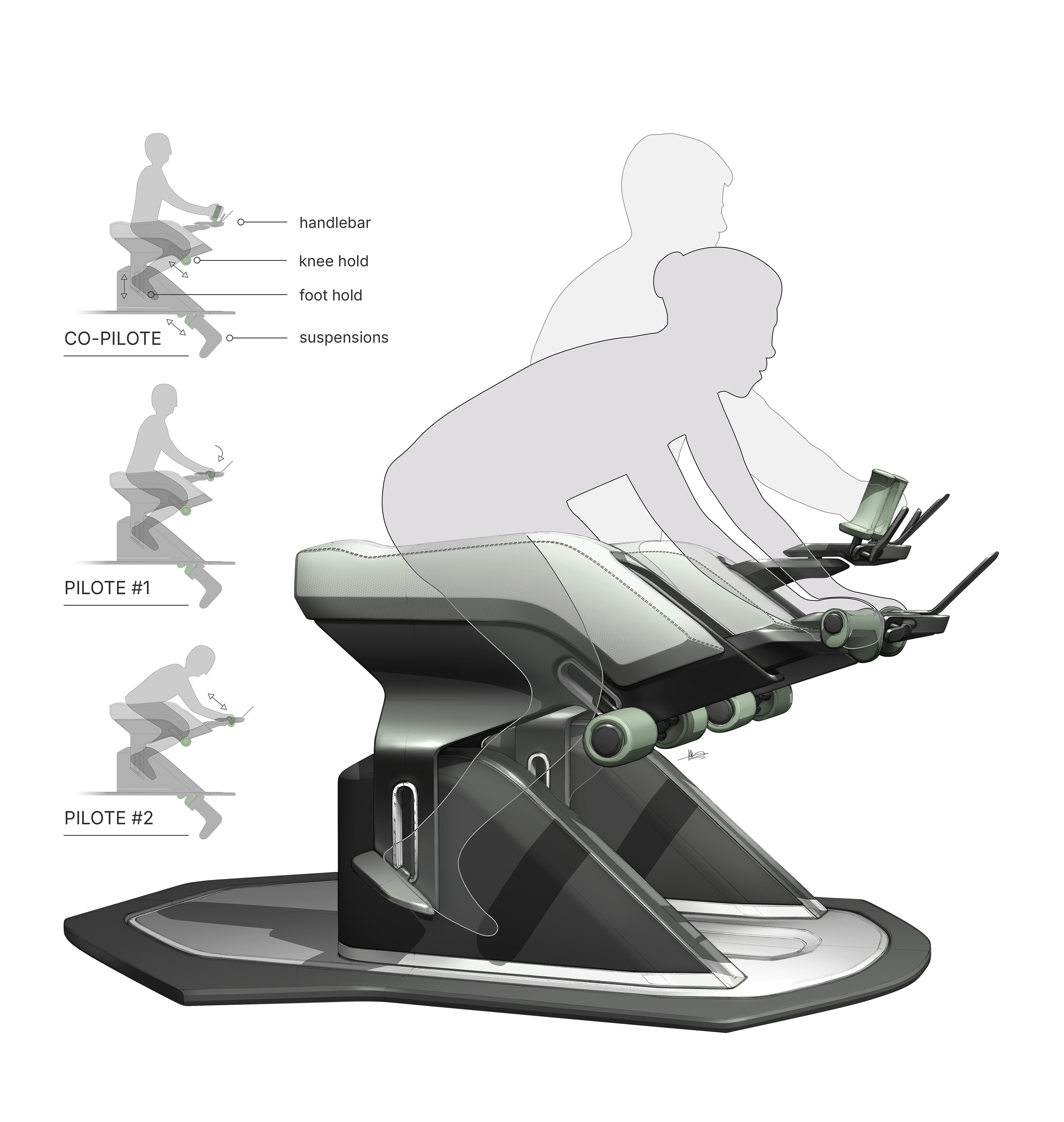
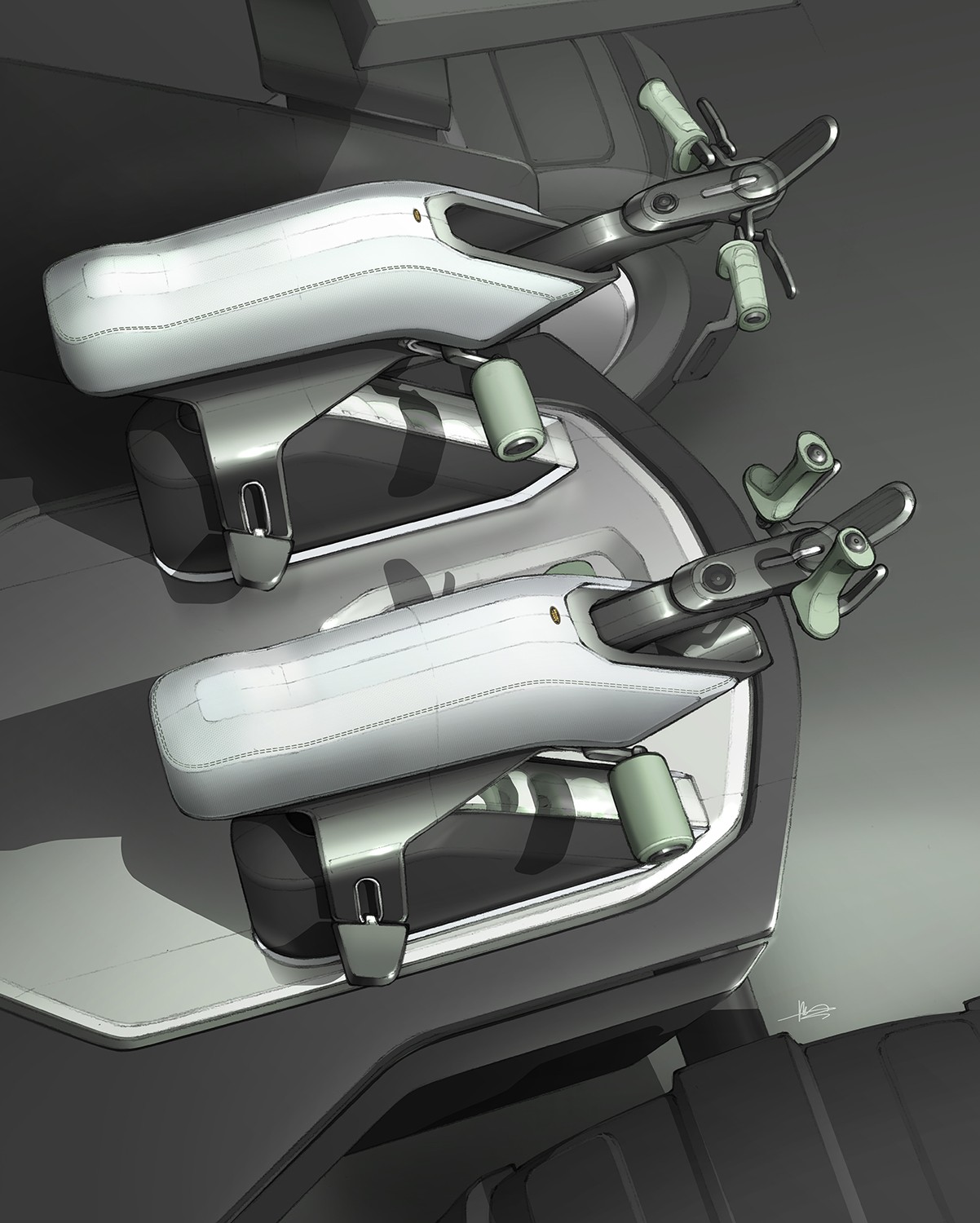
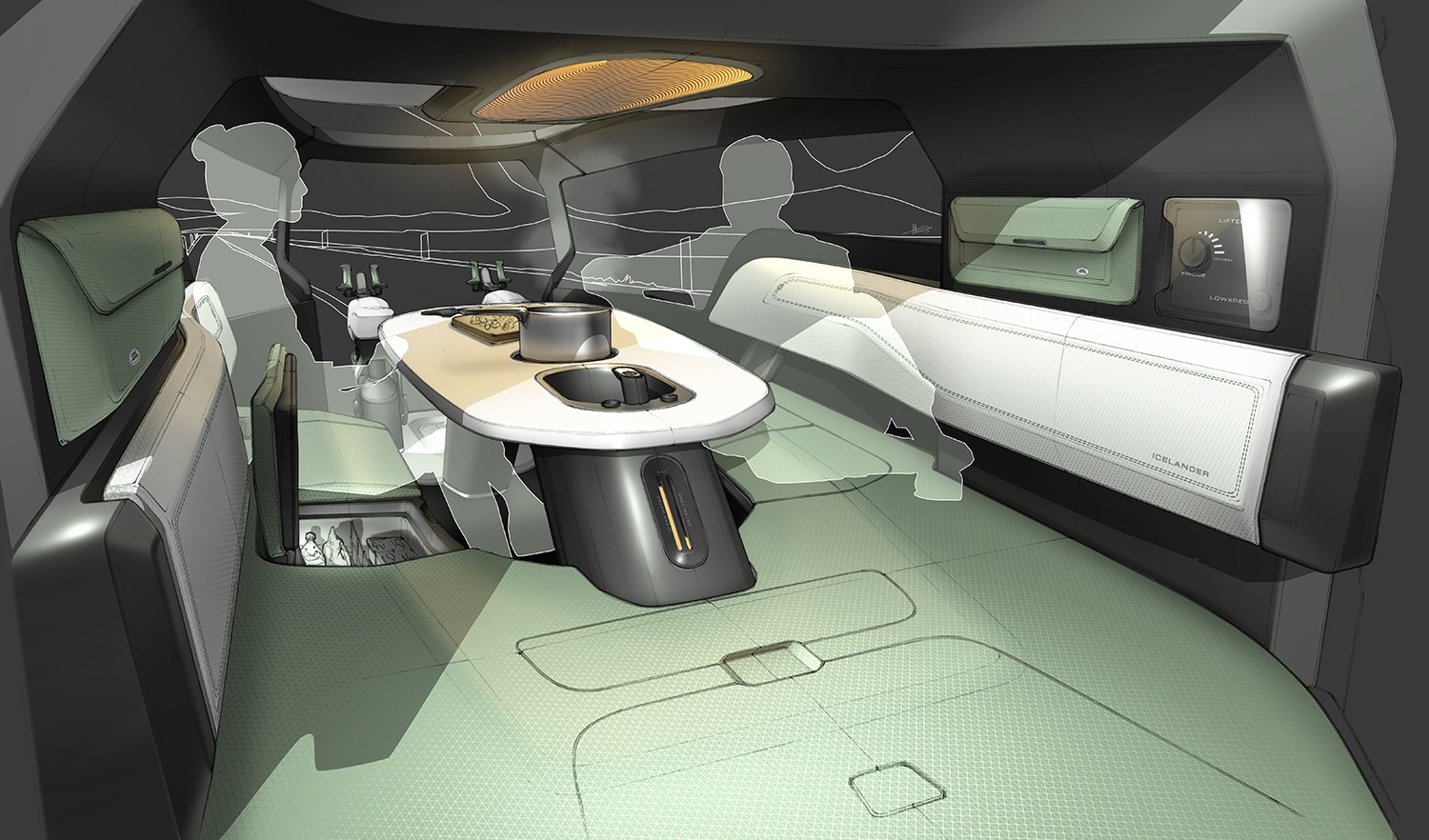
disorientation through autonomy
The goal is for the couple to remain as self-sufficient as possible for two weeks, managing electricity, water, and waste on their own. The vehicle includes a garbage compactor, two expandable water tanks, a photosensitive roof and tent, dry toilets at the rear, an indoor shower, a fridge, and a kitchen area.
